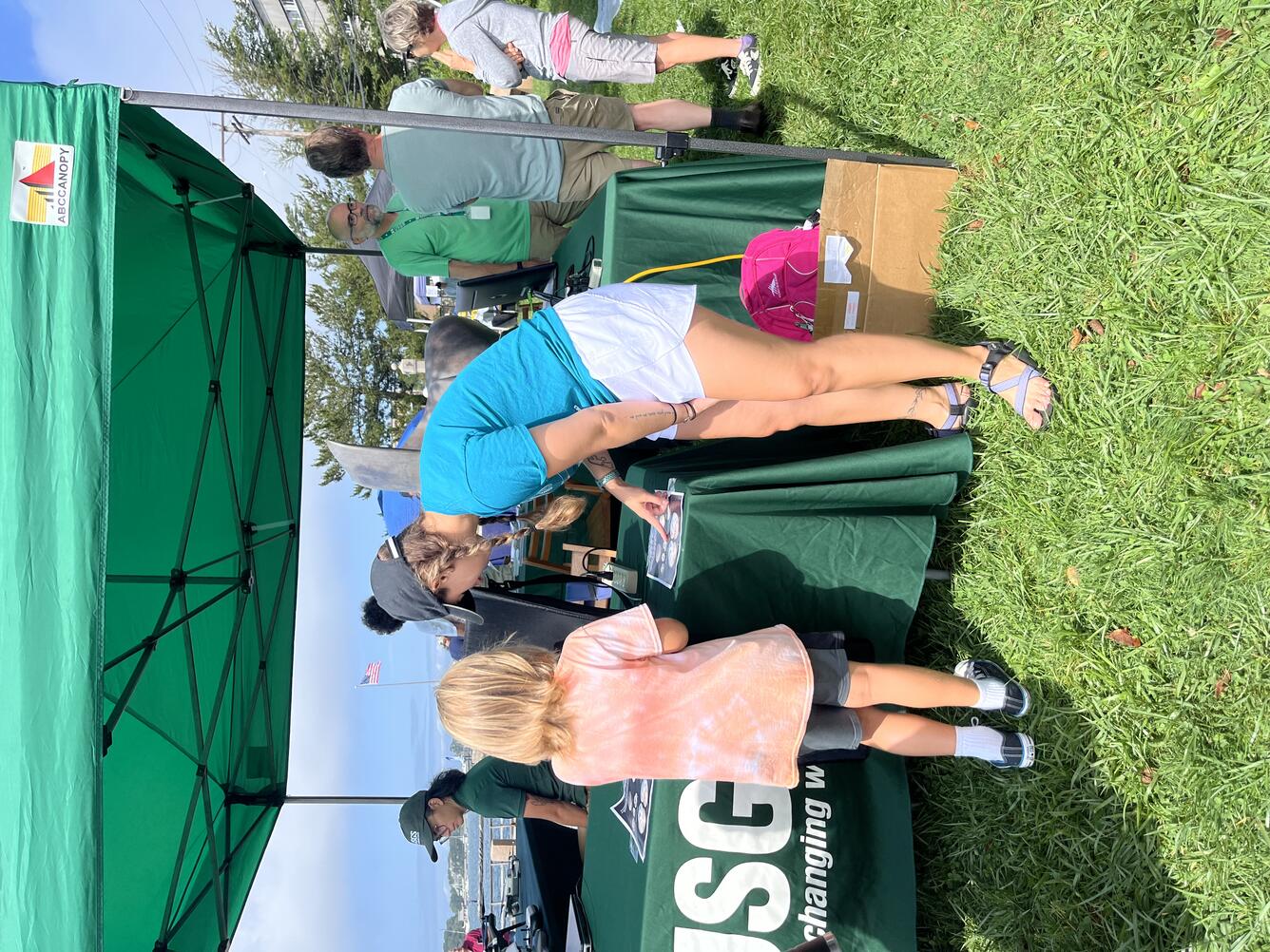Woods Hole Science Stroll 2024
A Wonderful Day Sharing Our Science
On August 10, 2024, the USGS and several other science organizations in Woods Hole, Massachusetts, hosted booths for the annual Woods Hole Science Stroll. Around 1,700 people of all ages attended the event and learned about the wonders of earth science.
Woods Hole, Massachusetts is a world-renowned center for the study of earth and ocean science. Every summer, the local science organizations in the area host the Woods Hole Science Stroll—a free event that features hands-on activities and opportunities to learn about coastal, ocean, and climate science. It attracts scientists, students, tourists, and the local community; the young and the young-at-heart. One of the main objectives is to get people interested in earth science and inspire the next generation of scientists.
In 2024, 19 organizations planned and participated in the event, including Wood Hole’s major science institutions, such as the USGS, the National Oceanic and Atmospheric Administration, and the Woods Hole Oceanographic Institution, environmental and education-focused non-profits, the U.S. Coast Guard, and local schools. New this year was an exhibit about NASA Jet Propulsion Laboratory's Europa Clipper mission. Together, we lined the streets with science demonstrations, oceanographic robots and instruments, fun games, and more. In total, we received 1,700 visitors, some of which we recognized from last year!
The USGS booth was a hub of activity during the event. Drone pilots Jin-Si Over, Jen Cramer, and Seth Ackerman represented the Aerial Imaging and Mapping Group and showcased some of our uncrewed aircraft system technology and talked about how they are used to map short- and long-term changes in coastal environments.
Oceanographer Zafer Defne discussed operational ocean and coastal dynamics forecasts, specifically COAWST—an open-source tool that combines many sophisticated earth-systems that provide components necessary to investigate the dynamics of coastal storm impacts.
Geologist Marie Bartlett hosted a microscope station where visitors could look at foraminifera, tiny microfossils that live in marine environments. Scientists at the USGS use foraminifera to determine the age of sediment found many meters below the seafloor and to learn more about past climate conditions.
Also, Information Specialist Sara Ernst and Geologist Kate Ackerman gave out handouts and talked with visitors about the scope of USGS coastal and marine science. Our activities and displays encouraged curiosity and exploration among the next generation of scientists and people of all ages.
Senior Scientist Alfredo Aretxabaleta represented the USGS at the Woods Hole Diversity Initiative booth to promote programs and activities associated with diversity, equity, and inclusion, including internships, such as the Partnership in Education Program. Advancements in earth and ocean sciences require a more diverse and inclusive scientific community that better represents society and is better prepared to tackle the complexity of our current and future scientific challenges.
Thanks to everyone that came and visited us at the event in August. We can’t wait until next year and we hope you’ll join us at the 2025 Woods Hole Science Stroll!




Get Our News
These items are in the RSS feed format (Really Simple Syndication) based on categories such as topics, locations, and more. You can install and RSS reader browser extension, software, or use a third-party service to receive immediate news updates depending on the feed that you have added. If you click the feed links below, they may look strange because they are simply XML code. An RSS reader can easily read this code and push out a notification to you when something new is posted to our site.














